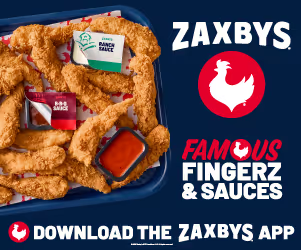Coaching one team is hard enough, but having to be a coach of two teams at one school is a tall order.
While it sounds like a ton of work which it is, there are tons of these coaches around the state of Georgia who hold different positions with multiple teams.
Whether they are head coaches, assistant coaches or a part of the team in any way, they are committed to winning in however many sports they assert themselves in.
These coaches who hold multiple positions in a variety of sports know that the positions they are in are not for the weak, but for the coaches who truly care about the development of their players and the image of their school. These men and women give their time and devotion to developing every child on their roster, wanting to put them in the best possible situation to succeed on and off the court or field.
Multi-sport coaches need to have some of the best minds in the state in terms of getting the most effort and the best product out of their players with the goals of development and winning a state championship on their minds.
In our latest Undercover Series, we take a deep dive about what it takes to be a dual-sport coach in the state of Georgia and how these coaches operate on a day-to-day basis.
Q: How far did you get in your playing days? Do you feel that experience has helped you throughout your career?
A: Yeah, I played football, I threw in track and field, I threw shot put and discus, while I was in high school I had the ability to play collegiate football as well, it was D-III but still college football is college football. It impacted how I coach, I think in a lot of ways. I'm not consciously thinking if my experiences have shaped somewhat of my expected outcomes, or they shape how I implemented practice in a lot of ways. I remember what it was like to work and to show up over the summer and to grind and to do all the things we ask our kids to do, its one of those where if I ask them to do something, I ask myself Is this something I did or Is this something coaches have asked of me? If it's not, is there a reason I am asking it of my players and of my athletes? It kind of keeps me grounded. I dont want to get too far away from where they are. Ultimately they are the ones that we are doing this for and if what I'm doing is benefiting them and I see the tangible benefits than it's my ability, it's my job to communicate to them and let them know why we are doing something. If we are doing stuff and its not stuff I did when I was an athlete when I was in high school and college, and I cant rationalize what we are doing and how it is benefiting our athletes, now I have to ask myself Why are we doing this?
Q: How do you deal with the recruitment of highly-rated players on your roster?
A: At least for me, I think the first thing I try to do is regardless if they are the highly touted, highly recruited athlete or they're just going to be a solid high school athlete. I want the kids to always be themselves. I want them to be them at every moment and every step of the way. What they have done has already got them as far as they have. I think everyone takes a slightly different approach to it but at the end of the day I think as coaches we are all the same to some extent in that every kid is going to have a slightly different experience. What we are trying to do is maximize that experience for them. For our more talented and gifted athletes, the experience that they are having is going to be slightly different because of what we are tailoring to them that is just outside of the sport, that is outside of the traditional practice. Its asking myself how I can help them more and advertise my athletes.
Q: Being both the head track coach and a coach on the football team, how do you make sure both teams are receiving enough attention throughout the year?
A: Its a little different with me than from other coaches and part of that is while I am an assistant football coach, and if you go through and look at my list of responsibilities, I do like four or five really big things with football. I am also the head track and field coach. Its really difficult during the spring to do anything football related just because of the time commitment that is the traditional practice and outside of it the meet management, the personnel management, the checking of eligibility and grades, its monitoring the different aspects of the track program and looking at the work outs and are they translating to improved running times or throwing differences. For me, I am just really fortunate that as a content-based instructor, I teach a social studies class. Every semester there are a handful of football players who are in my room throughout the day that I am teaching too. It is what I do within the building during track season that keeps me integrated with the football program. They know I am very busy, they know if I am showing up to something football-related in the spring, like it's a bonus, it's not something that is usual. Thankfully I have a head coach who respects that. He has looked at me and said, You are a head coach, you have to go manage your program, and he has given me that flexibility to be fully invested in my team in the spring. He also knows that when summer hits, I am fully invested into football and there is nothing else that I am doing. Whether its fielding phone calls or having a fall/winter interest meeting to prepare for upcoming track season, but I always whole-ass everything, when people know I am in season, I am in season and everyone around me knows it. When you are out of season it is connecting with those athletes on a more personal level versus just being a coach. Now seeing our cross country athletes before a game as they work out on the track is a pre-meet workout, or going through and stopping by the weight room in the spring because our football players all take a weight-training class together. It's stopping by and walking in so they see that I am seeing them. Its a little different.
Q: What are the major differences in coaching track and football? What are some similarities?
A: My athletes ask me this all the time: What do you like to coach better, do you like coaching football more or track? In reality, I love coaching both and the differences in how I coach both makes me love and appreciate the other season as we get closer and closer to it. Football is high intensity, it is a lot of passion but it's also a lot of intensity and whether that is intensity in drill work or in how loud I have to be at practice or how quickly and fast we transition from drill to drill from individual to team. It is a level of intensity I can sustain during the football season. When we transition from football to track, it's nice because I can take a deep breath and relax. Traditionally, track athletes dont respond the same way as a football player. I cant yell and yell and yell and get results because a lot of times, if you are trying too hard and you are not relaxed and you're not feeling your form or your technique, it isnt a good throw or race. Coaching track is like my Zen moment, because I get to relax and have those breaths and I am not teaching intensity or timed focus as much as I am teaching a skill and a technique. Teaching technique is about communication, and how well I communicate is not necessarily how loud I am in that moment. We want to be intense at a really specific point in time, we cant be intense for 90-minutes, because then how are my athletes focusing and really thinking about all of those little details because for whatever reason, intensity lends itself to a big picture moment. Its a very different style of coaching, and by the time track season ends, I am so excited to get back to football, and as the longevity of football ends whether that is in November or December, I look forward to taking that step back and coaching track.
Q: What are the different ways to prepare someone for a football season than the track season? Different ways of training?
A: The biggest difference I see between the two is the preparation for track is significantly more mental than it is in football. It always feels like that in football, theres a level of physicality that we have to condition, train and build. Whether that means strength in the weight room, or micro-managing of meal plans and diets and making sure kids are eating enough, getting enough carbs and proteins, Are they hydrating enough? Are you actually running when we are asking you to run? We are trying to physically condition them for the length of a game. There is a huge physicality standpoint when it comes to football and with track, yes there is a condition stand-point, but theres also more of a mental piece that these kids know they get one chance and we have to mentally prepare them and condition them, so if they have a bad race, throw, or meet, there is always tomorrow. The mental stress of track is super overwhelming to some kids because whether they have been successful their whole life or it is these high pressure situations that they are not used to, how am I putting the pressure on them in practice versus how am I physically pushing them to see where the limit is like we do in football.
Q: Do football players make good track runners? Vice versa?
A: I am a huge advocate for multi-sport athletes. Regardless of what sport you come from and what sport you are going too. I think being a multi-sport athlete is really, really important because of all of the diversity of skills that you accumulate. When I talk with my position group or when I talk with my athletes on the football field, I talk about tools in their toolbox. When I am teaching you this block or that block or how to escape or how to release on a route, I try to teach tools so that in the moment you can open up the tool box and think which works best in this scenario. They can pick the tool that best fits them and that moment. What I love about kids who play a bunch of different sports, whether it's basketball, wrestling or baseball it's they have different tools. To be a really good track kid, you have got to be confident. You cannot lack confidence when you are running the 100-meter dash, because the only thing you have other than that stop-watch is what you are carrying inside you. Its the confidence, it's the ability to exude that confidence because a lot of the race is run before the race is actually run. Before the gun ever goes off, someone has already won the race. Its how you carry yourself, it's how you approach the line, its how you do a lot of the personal stuff beforehand. Seeing a track kid on the football field, they tend to be those skill positions, they tend to be those wide receivers and your safeties, but there is a level of confidence when they put those pads on and they are in that moment they trust and they know they are going to make those plays. That confidence piece is huge and there is a huge crossover when track athletes show up on the football field, and vice versa when football players are at track practice, they are the ones, telling the coaches they need one more rep. They are calling out each other for a race after practice, after everyone is tired. We compete. Whether that is in drills or in practice, whether thats at the beginning or at the end, we are preaching competition and it is all about excelling and finding a way to be successful in competition. Those football guys when they come out to track, they want to compete. Thats kind of abnormal in the track world. You definitely compete in track, you compete in meets, but when my kids get their workout for the day, a lot of track is competing from within and they know how to push themselves, but sometimes they dont necessarily know how to respond or how to let others push them as well. That football player comes out and competes, it's just fun and it's a little bit different.
Q: What does it take to make a run in the GHSA Playoffs?
A: In my head there are two things that championship-caliber teams, whether that means you get to the Elite Eight, Final Four or make it all of the way, there are two defining characteristics of programs that make runs towards championships. I think the most important thing that they all have in common is they understand how to overcome adversity. The length of a season regardless of what season is long. You are not going to win every single thing you do. You're going to have moments where you are tested and challenged, and maybe it is losing a game, but the teams who go really deep, they understand how to overcome those obstacles. They know how to overcome a pick-six, a loss to their crosstown rival, overcoming bad officiating. Its the ability to overcome those hurdles and to go beyond, because its really easy to get sucked in and fall behind, it's really easy to play the blame game and say Woe is me but good teams find ways. The other thing really good teams have is depth. You have to have depth, and in a lot of cases, the teams who dont have as much depth, my question to them is, What were you doing to help build it? Not every team is gifted with 150 kids on the roster and a very obvious first, second and third string. You have teams, where you look at your roster and realistically you see around 50 kids that can play. I have to have this many on the field or this many at this event. Then I ask what can I do to turn that 50 into 75? What are you doing to turn the 75 kids into 100? The teams who know how to build and create depth and develop younger players for roles, those teams make deep runs. They know how to build and develop, it's an important piece. As important as getting your starters reps. So much of athletics is about right now, but our job as coaches is forward thinking. What am I doing to make sure my freshmen and sophomores are ready for next year? If you wait until next year to worry about your starters then you are already behind.
Q: What are some of the biggest changes that you have noticed to high school sports over the years?
A: I think the obvious change is the number of states that are allowing NIL, Name, Image and Likeness. I get why Georgia is doing it, but you adopt something that is athlete-friendly, because you want to keep the best athletes in the state. We have got states that are very obvious about it, like California, but we are not the only state that lost kids to California because they thought they could get NIL money. As this continues you are going to get states all around you choosing to open up the door to NIL and if you choose not to then you run into the risk of losing some of the top talent in the state. It is definitely difficult to navigate as a coach and as a player. You want these kids to have as many opportunities as you have, but at the same time you have to play Mom and Dad. Have to ask the kids: Hey, you are going to sign this contract, do you know you are making an income or do you know you are going to have to pay taxes on it? There are layers to it that kids arent actively thinking about, they just want that bag. But when you make an income there are other sides to that. Its not at the forefront of what these kids are thinking, but thats what good coaches and teams should be doing. If you are going to have those conversations about branding and marketing themselves, then setting up an LLC or a business should be talked about as well, because if you are going to earn an income, it needs to be funneled somewhere. If you are going to do it this way, ask yourself, Whos in your corner to help manage your money? Who is helping them make sure they dont get screwed over? NIL is by far the biggest shift in high school sports that I have seen. The other big change that is becoming more prevalent is the effort by some kids to relocate high schools and to be on a different team. Whether they are moving because they arent starting right away or because of what LeBron did in Miami. Transferring from school to school is way more prevalent than it was 10 years ago.
Q: From your perspective, what are the biggest issues in high school sports these days? What are solutions to these problems?
A: I don't know if I consider NIL to be a problem. Its just new. We don't have a lot of experience with it. I have heard from other coaches describe it as the Wild West, kind of, but as we get more familiar with it and as the state establishes more boundaries and the GHSA helps regulate what can and cannot happen, I think itll get easier. As it becomes more engraved into what we do, I think itll be easier to manage. Like I said, I don't necessarily think its a problem. I think kids transferring from one school to another is a bigger issue than NIL. There are supposed to be actual guidelines to how many transfers can be occurring, have to have a physical change of address, where you start versus where you end up. I think that is a bigger problem. Everyone knows of another school or has heard a rumor of another school where a kid is living out of district and playing on their team. What is the GHSA doing about it? What is the level or burden of proof that we have to provide for the GHSA to do something about this. Those I think are the bigger problems.

.avif)



.avif)

.avif)
















